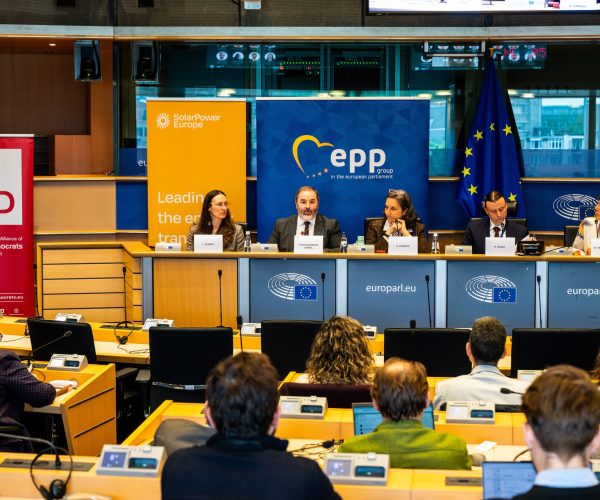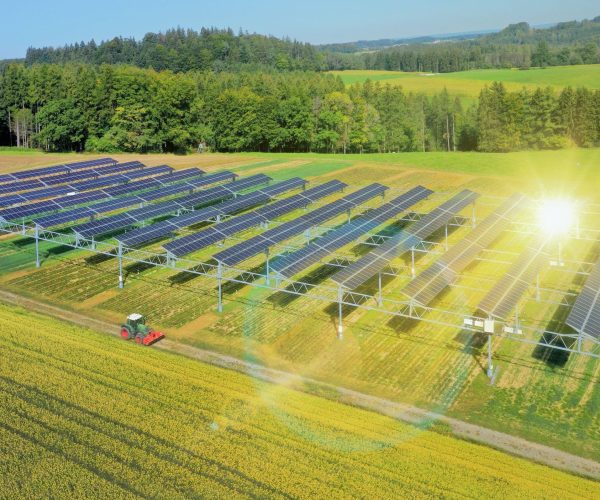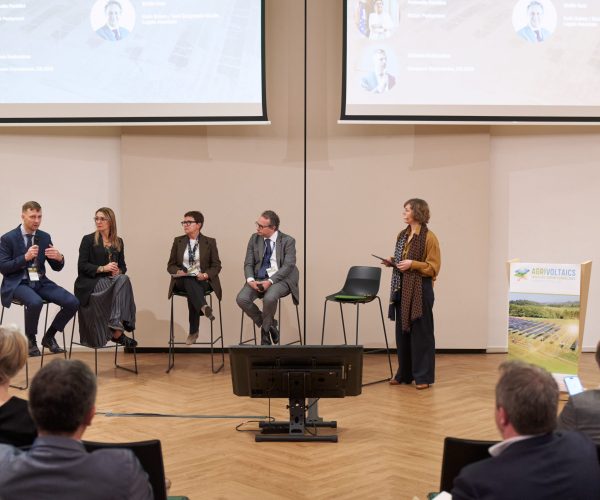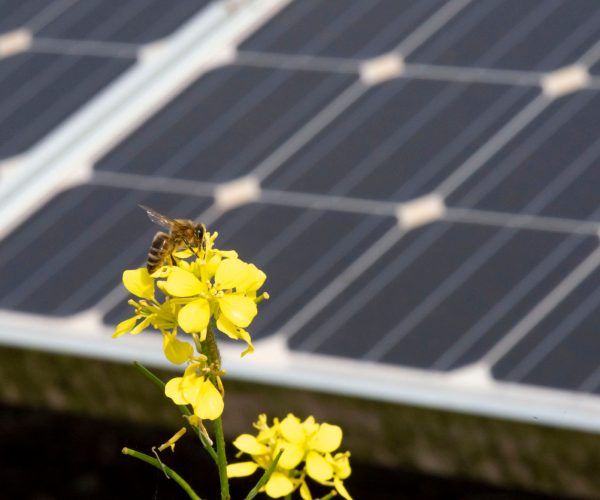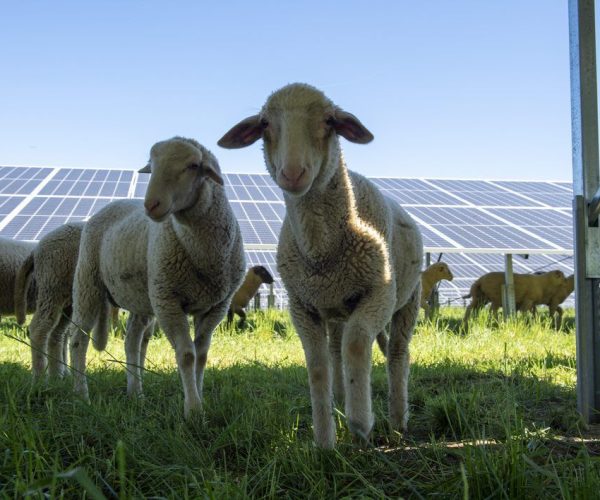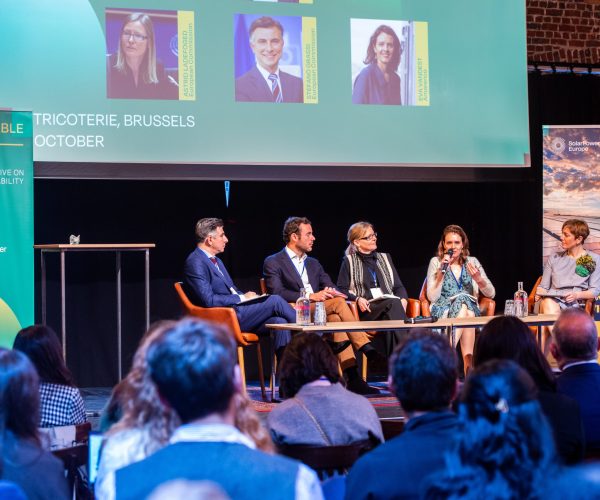Agrisolar: A new partnership between farmers, energy and nature
Last week, SolarPower Europe took agrisolar to the European Parliament! One message stood out loud and clear: agriculture and solar PV are not competitors – they’re natural allies.
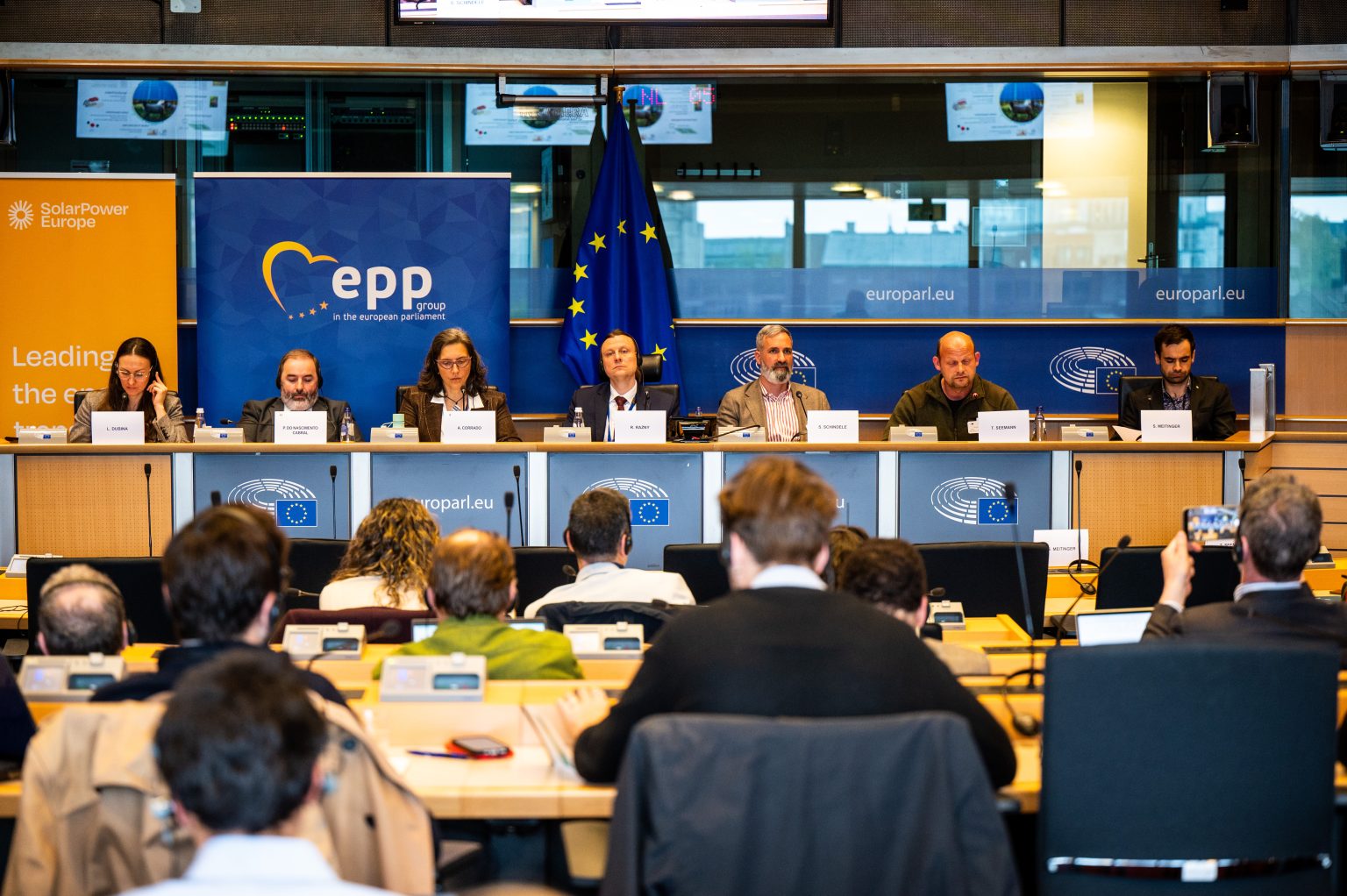
Photo: © SolarPower Europe
As Europe faces the compounded challenges of climate change, energy security, and food security, a new frontier is emerging at the intersection of agriculture and solar power: agrisolar. This event brought together policymakers, solar innovators, climate and nature advocates and farmers to explore how Agri-PV, a dual-use approach to land for both food and energy production, can play a critical role in our future towards sustainability.
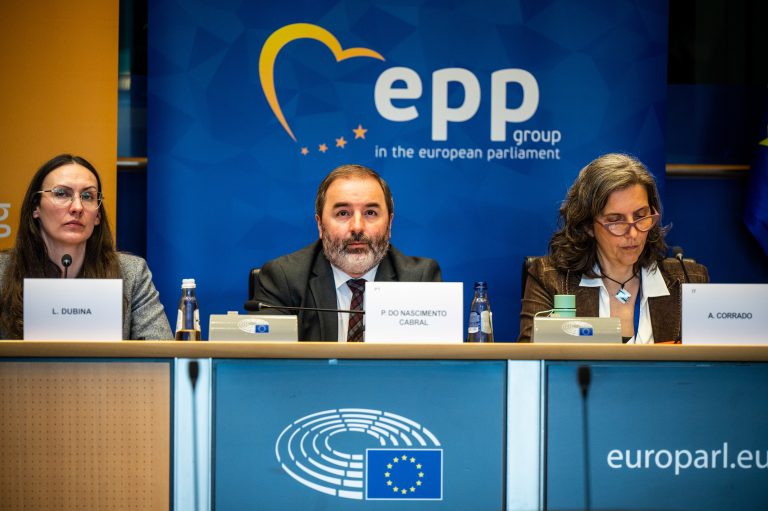
Photo: © SolarPower Europe
MEPs Underline the Benefits of Agrisolar
This SolarPower Europe event was co-hosted by MEP Paolo Do Nascimento Cabral (European People’s Party) and MEP Annalisa Corrado (Group of the Progressive Alliance of Socialists and Democrats) who opened with their keynote speeches. MEP Cabral started by pointing out that there is no real European Union definition when it comes to agrisolar. He also highlighted that we need to raise the awareness about the possibility of being able to do both since this innovative technology is still very much under the radar for so many.
MEP Corrado stated that there needs to be a more harmonised EU framework with fewer barriers and minimum standards. She also pointed out that agrisolar is an important opportunity to diversify and boost the workforce, particularly in youth and female workers.
Presentations from the Solar and Agriculture Sectors
To demonstrate how agrisolar works and to exemplify it in practice in real case scenarios we heard from two representatives in the solar sector. SolarPower Europe’s CEO, Walburga Hemetsberger, presented successful examples of real agrisolar projects in Austria and the Netherlands.
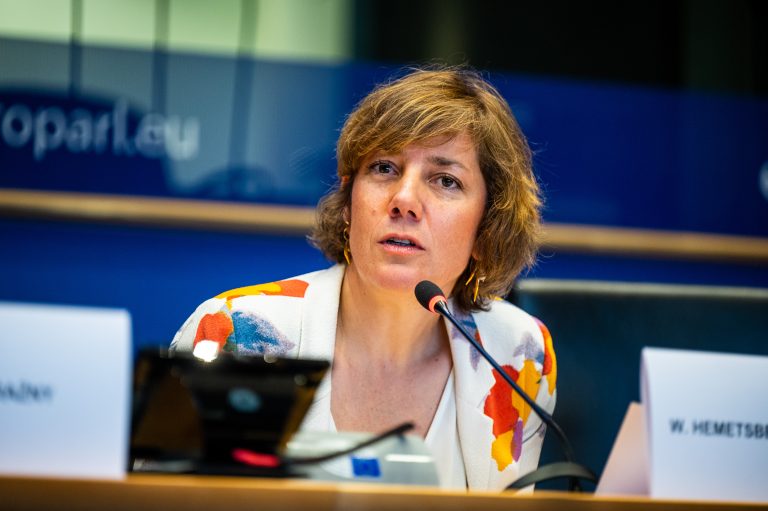
Photo: © SolarPower Europe
“These are just two successful cases from the over 200 existing European projects that can be seen on the digital map on the Agrisolar Europe Platform.””
Walburga Hemetsberger, CEO, SolarPower Europe
SolarPower Europe’s Agrisolar Handbook was also presented; the handbook provides a guidance for farmers on agrisolar benefits, its applicability across different farming practices, and key policy recommendations.
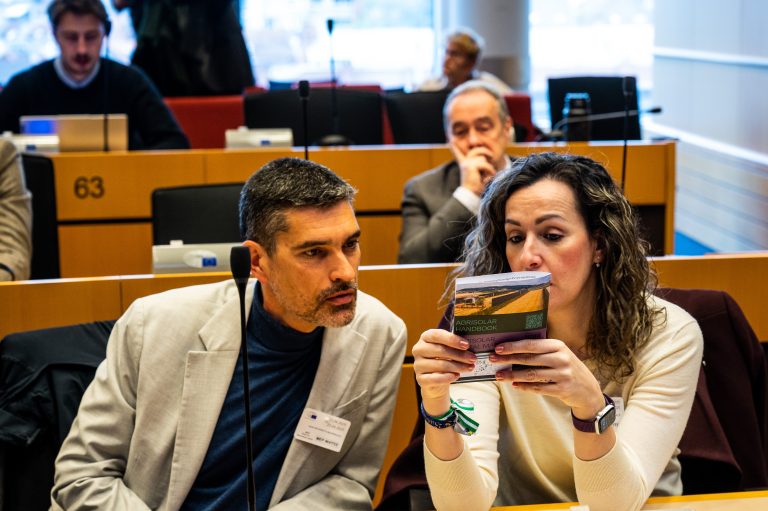
Photo: © SolarPower Europe
Following this were two presentations from representatives from both solar and agriculture, starting with Stephan Schindele, the Head of Agri-PV at BayWa r.e.:
“It’s not just an energy transition; it’s a farming transition. We need to unite them. If the farming and renewable energy sectors unite, we don’t need fossil fuels anymore.”
Adaptation is quickly needed to secure Europe’s food supply. Agri-PV can be an attractive solution for this but only if it proves to be beneficial for farmers with added incentives, financial security and stable planning from the EU.

Photo: © SolarPower Europe
We then heard from shepherd Thomas Seeman, who has interspace-PV with organic livestock grazing on his farm in Barth, Germany. He called for more uniformed rules and for the EU to act since the current situation in different regions in Germany has made it difficult for farmers to get authorisations for Agri-PV with sheep grazing to receive CAP direct payments. It was clear from his comments on the challenges of obtaining permits and the lack of subsidies that Agri-PV still needs to overcome many barriers before it can be a genuine solution to reaching the EU’s climate objectives. Too much overregulation and red tape were a cause of this in his case, and he urged the European Parliament to act with uniformed rules across all member states.
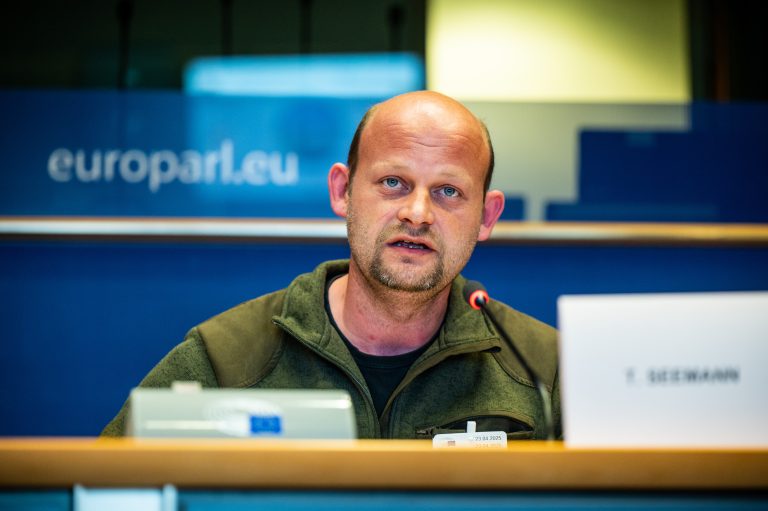
Photo: © SolarPower Europe
Panel Discussion on Agrisolar
Following these insightful presentations was a panel discussion involving further policymakers with the intent of bringing the topic of agrisolar to the European level.
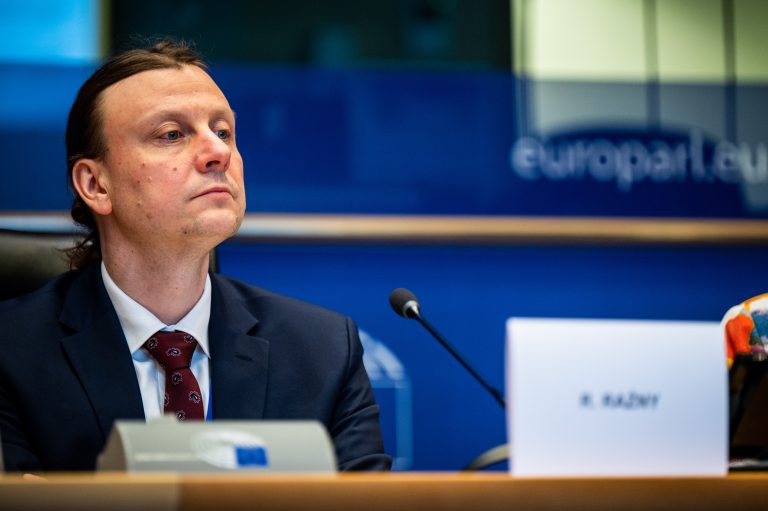
Photo: © SolarPower Europe
This included Rafał Raźny from the Polish Permanent Representation to the EU who noted that innovative security is the motto of the current Polish Presidency of the EU Council and that stabilising farmer’s income is a priority. It’s important to keep farmers on their land since the rural population has declined in recent years. He noted that it is a complex situation since there are so many different business models and varying case scenarios when it comes to implementing Agri-PV. But what is clear is that there is a future for agrisolar in Poland and their government wants to make use of it due to the many benefits it provides.
Stefan Meitinger from the German Farmers’ Association added to the discussion by defining what exactly agrisolar is and the various issues of curtailment in terms of grid usage.
The Next Steps
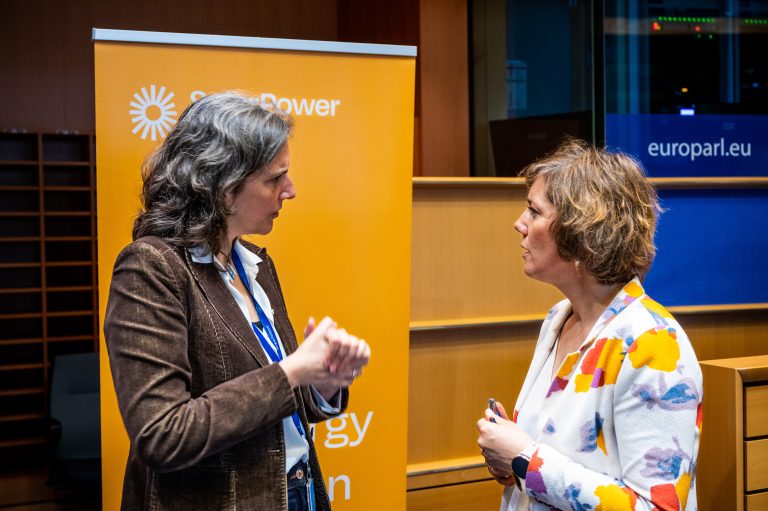
Photo: © SolarPower Europe
The key learnings from this event were that agrisolar could:
– Meet EU 2030 solar energy goals by developing Agri-PV on just 1% of agricultural land in Europe
– Boost farmer income while reducing emissions and water use
– Create jobs
– Keep land productive by combining both food and energy production
– Boost crop yields (by up to 60%), improve water retention, and increase pollinators and soil health.
– Financially, agrisolar is a lifeline: One farmer increased annual income by 25% by integrating solar PV with livestock grazing.
– Attract younger generations back to agriculture with innovation, purpose, and profitability.
But it was also clear that there is still work to be done:
– We still need clear EU-wide definitions of agrisolar
– Implement stable and harmonised policies across all member states
– Eligibility of agrisolar for CAP payments and inclusion of Agrisolar in CAP eco-schemes for farmers interested in developing such projects
– Support for R&D and streamlined permitting processes
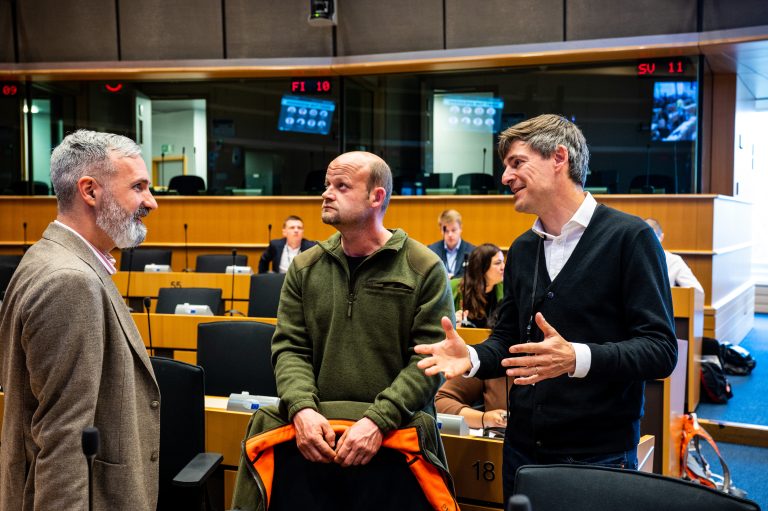
Photo: © SolarPower Europe
Overall, this event on agrisolar was a fruitful discussion that made it clear that Agri-PV is more than just an innovative technology and can be a strategy for the future of Europe that benefits society on all levels.
Stay tuned for further updates and video interviews with the key speakers from the event.
Explore 200+ projects on the agrisolar digital map
these might be interesting to you as well
